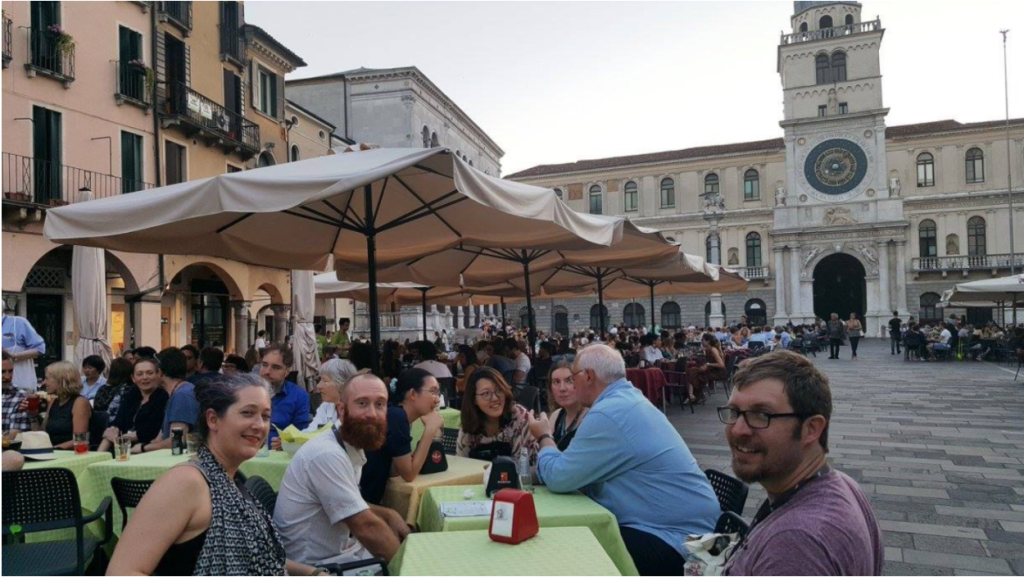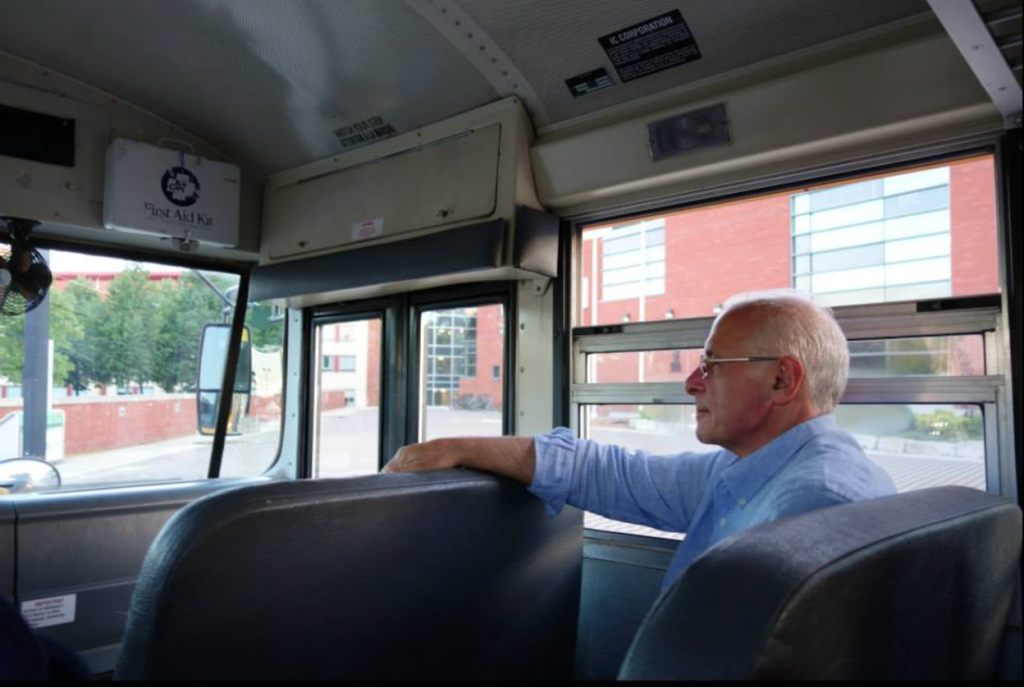Giannalberto Bendazzi was uniquely capable of being both entirely approachable and formidable at the same time. Speaking to colleagues as I prepared this text, the daunting email subject “why don’t you write a book on x,” was frequently mentioned. As for myself, I can credit to Bendazzi the first time that I felt well and truly disagreed with as an animation scholar, at a Society for Animation Studies conference – probably it was in Toronto. For the first time, it felt that I was being questioned not because I was a graduate student with a faulty method or incomplete execution – I had asked the right people good questions. Simply, he just thought my dates and conclusions were a problem. I was delighted and, to my surprise, so was he. More importantly, I suspect a dozen emerging scholars had that experience that weekend, and over the years, perhaps most of us in this small community have. We are better-equipped animation scholars as a result of his questions, his disagreements, and his support.
How is this personality reflected in the detailed volumes of his masterwork Animation: A World History? When I read that he had passed, I found myself looking for the passages that best capture this duality of being so intimidatingly prolific and yet so open-handed. I am probably not alone in enjoying Bendazzi’s footnotes. I noted one in particular from the “Foundations” chapter in Volume One: “this historian cares about freedom” quoted in at least one obituary (e.g., see Dudok De Wit, 2019). This attribute of Bendazzi’s legacy feels particularly important as tanks again roll across Europe. However, my favorite is from the very next page:
“Links, names and chapters will almost certainly be missing from the following pages. In addition, other pages (filled with names, titles, and dates) may be boring to the reader but were necessary because it was imperative to do some ‘pre-emptive archaeology’ (pardon the oxymoron) and leave at least a trace that could be later used by younger and better-equipped scholars” (Bendazzi 2015: 2)
I appreciate his occasional humorously self-deprecating references to the incompleteness of his work. Describing the “boring” pages as traces for others to follow reminds me of his mentoring persona at conferences. However, I would also argue that here pre-emptive archaeology is rather less an oxymoron than Bendazzi suggests, especially now that he is gone.
Although by choice a critic turned historian, the status of Bendazzi’s work as archaeology is not difficult to defend. He was systemic in approach and brought an unprecedented interest to recorded traces of the creative process of animation. In this, he also explicitly set apart animation from live-action cinema, alongside other visual forms, an aesthetic phenomenon that spans humanity:
“I maintain that animation is an art form per se, not a film genre, and that it can boast marvelous masterpieces. I am a historian. My opinion is that a historian should study the past to work in the present and shape the future.” (Author Profile, Routledge 2021)
An Accessible and Unpretentious Methodology. His approach was both accessible and unpretentious, interview and record-based chronology of landmark names, titles, dates – for example, in my own area of animation education – often providing us the only reference of who studied where, with whom, and providing tempting glimpses as to what end. He termed this ‘traditional’ even ‘unsophisticated.’ I will quibble with that in a moment below, but not with the necessity of the method. As Rall writes of Bendazzi’s approach:
“Instead of relying on implausible speculation, he always went to the source – be it the artists themselves, co-workers, or production materials – to substantiate his findings with hard facts” (Rall 2020:9).
Despite the concreteness of this method – holding much of the recent theoretical play of animation studies at arm’s length – Bendazzi the historian does share with many who term themselves media archaeologists an attention to the forgotten and the hidden. Although he rejects counterfactual speculation, he does specifically set out to uncover the “humble” animation that has not and otherwise would not be included alongside more privileged texts, a question of quality as much as influence. Such encyclopedic subjectivity requires scale. To achieve the comprehensive scope of Bendazzi’s work – in the case of A World History – necessitated that he buy back the rights in order that it be published in three volumes as the method called for (Amidi, 2014).
Pre-emptive Archaeology. What then of pre-emptive archaeology? If not for all we know of Bendazzi’s wide and collaborative approach, the ‘pre-emptive’ here might be understood as the attempt to get there first – to forestall the work of others. Better is to recognize this as rescue or emergency archaeology – the preservation of historical information, “traces” in imminent danger of being lost. But for the combined effort that he brought together – a great deal of animation history would be unknowable. Certainly that job is not done. As he suggests: “To younger scholars, the pleasure to examine everything closely” (Bendazzi, 2015: 1).
That prediction certainly pans out. If you need a pandemic procrastination and care to venture down a citation rabbit hole, consider the range of recent scholarship referencing Bendazzi’s work – even A World History – alone, ranging from archiving Bob the Builder (Henderson, 2017), to Polish Cultural Heritage Management (Ciszewska, 2019), Amar Chitrakatha (Chandra, 2018) to the unperfection of the Zagreb school (Morton, 2018). Not coincidentally, this brings up a lot of work from members of the Society for Animation Studies and SCMS Animated Media SIG.
The jumping-off points themselves are often striking. Speaking of my own work in Bendazzi’s shadow, I am struck by just how many hours of interviews and thousands of words build upon just 178 words on Animation Education in India in Chapter 14 of Volume 2. There are likely as many such passages as there are prospective animation historians.

Conclusion. To conclude, what are we to do now, when we can no longer do what we have always done – when in doubt, to ask Giannalberto? To refer the freshman undergraduate to his texts, the new graduate student to the opportunities of further historical and ethnographic research, in delving deeper, and then to seek his advice? Still, this work will need to continue as a benchmark to deepen and widen animation history.
In recent years a number of important efforts have emerged to conceptualize new approaches to animation history, including drawing ‘pervasive’ and useful practices like advertising and educational animation that Bendazzi consciously but inevitably omitted (Buchan, 2013; Bieberstein and Feyersinger, 2019; Cook and Thompson, 2019). Bendazzi writes hopefully of the point when A World History – has rendered itself “useless.” Far more likely, we will come to recognize his contribution as far more akin to an era in the development of animation history overall. Certainly, the growing and imminent task of animation historiography will have to attend to Bendazzi’s choices. In the meantime we still need pre-emptive archaeology – more unsophisticated history – filling in names and dates, arguing and challenging them, iterating and welcoming others to follow.
References
Amidi, A. (2014). “Why Giannalberto Bendazzi’s Animation History Book Must Be Published” Cartoon Brew, 2 April https://www.cartoonbrew.com/books/giannalberto-bendazzis-animation-history-book-must-be-published-98083.html
Bendazzi, G. (2015). Animation: A World History: Volume I: Foundations-The Golden Age. Routledge
Buchan, S. (2013). Pervasive animation. Routledge.
Bieberstein. R, and Feyersinger, E. (2019). “Doing Animation History: Exploring Challenges and New Visions in Writing Animation Histories” 25-27 March, University of Tuebingen.
Chandra, N. (2018). “The Fear of Iconoclasm: Genre and Medium Transformations from Comics to Graphic Novels in Amar Chitra Katha, Bhimayana, and Munnu” South Asian Review, 39(1-2), 11-33.
Ciszewska, E. (2019). “Who Benefits from the Past? The Process of Cultural Heritage Management in the Field of Animation in Poland (The Case of the Se-Ma-For Film Studio in Łódź).” Animation, 14(2), 117-131.
Cook, M., & Thompson, K. M. (eds.) (2019). Animation and Advertising. Cham, Switzerland: Palgrave Macmillan.
Dudok De Wit, A. (2021). “Giannalberto Bendazzi, Pioneering Animation Historian, Dies At 75” Cartoon Brew, 17 December, https://www.cartoonbrew.com/rip/giannalberto-bendazzi-pioneering-animation-historian-dies-at-75-211608.html
Henderson, S. (2017). Can We Fix it? Archiving and Analysing ‘Bob the Builder’–A Resources Paradigm and Research Method (Doctoral dissertation, Loughborough University).
Morton, P. (2018). The Zagreb School of Animation and the Unperfect (Doctoral dissertation). University of Washington.
Rall, H. (2019). Adaptation for Animation: Transforming Literature Frame by Frame. CRC Press.
Routledge.com (2021). “Giannalberto Bendazzi Author Profile,” Taylor & Francis Group https://www.routledge.com/authors/i13976-giannalberto-bendazzi
Timothy Jones is Assistant Professor of Media Arts and Director of the Academic Media Center at Robert Morris University in Moon Township, Pennsylvania where he teaches courses in media culture and production. His research interests include animation production culture and the relationship between education and sustainable professional media communities. His case studies include Indian animation, visual effects outsourcing, and most recently, accessible animation labs during COVID19. Tim is Treasurer of the Society for Animation Studies. His work appears in Animation: An Interdisciplinary Journal, Animation and Advertising, Animation Practice, Process & Production, Animation Studies Journal, Reconceptualising Film Policies, and the South Asianist.


thanks for this beautiful text
Thank you so much for the thoughtful post.